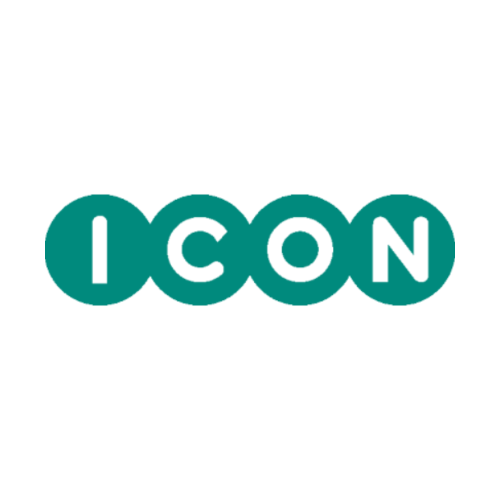
Building a successful resume for Clinical Research positions

In this article, we will explore the key components of a successful clinical research resume and provide valuable tips on formatting, tailoring, and optimizing it to stand out from the competition.
Importance of a well-crafted resume for clinical research positions
In the world of clinical research, a well-crafted resume is the first impression you make on potential employers. It serves as a snapshot of your qualifications, accomplishments, and potential fit for the role. A strong resume can open doors to exciting career opportunities, while a poorly constructed one may lead to missed chances.
Recruiters and hiring managers are often inundated with numerous resumes for each clinical research position. Therefore, it is crucial to make yours stand out from the pile. A well-crafted resume demonstrates your attention to detail, professionalism, and ability to communicate effectively - all qualities essential in the field of clinical research.
Key components of a clinical research resume
When building a resume for a clinical research position, there are several key components that should be included to provide a comprehensive overview of your qualifications and suitability for the role.
Contact information: Begin your resume with your full name, phone number, email address, and professional LinkedIn profile URL. Make sure your contact information is easily visible at the top of the page.
Summary or objective statement: A concise summary or objective statement can give employers a quick overview of your career goals and relevant experience. Tailor this section to match the specific job you are applying for.
Education and certifications: Include details of your educational background, such as degrees earned, institutions attended, and dates of graduation. Additionally, highlight any relevant certifications or courses completed in the field of clinical research.
Skills and qualifications: Create a dedicated section to showcase your skills and qualifications that are directly applicable to clinical research. This may include knowledge of specific research methodologies, data analysis software, regulatory compliance, and ethical considerations.
Professional experience: Detail your work experience in reverse chronological order, starting with the most recent position. Provide a brief description of each role, highlighting your responsibilities, accomplishments, and the impact you made. Focus on clinical research-specific tasks and projects you have undertaken.
Publications and presentations: If you have contributed to scientific publications, presentations, or posters, include them in a separate section. This demonstrates your commitment to academic research and your ability to disseminate findings.
References: It is customary in many countries to provide references upon request. Mention that references are available and provide their contact information where relevant.
Formatting and layout tips
In addition to the content, the formatting and layout of your clinical research resume play a crucial role in making it visually appealing and easy to read. Here are some tips to consider:
Length: Aim for a one to two-page resume, focusing on the most relevant and recent information. Avoid unnecessary details and lengthy paragraphs.
Font and size: Use a professional-looking font such as Arial, Calibri, or Times New Roman, with a font size between 10 and 12 points. Ensure consistency in font style and size throughout the document.
Sections and headings: Divide your resume into clearly labeled sections and use headings to guide the reader. This enhances readability and allows employers to quickly locate the information they are looking for.
Bullet points: Utilize bullet points to list your responsibilities, accomplishments, and skills. This makes it easier for recruiters to scan your resume and extract key information.
White space: Leave adequate white space between sections and paragraphs to avoid a cluttered appearance. This enhances readability and gives your resume a clean and professional look.
Consistency: Maintain consistency in formatting, such as the use of bold or italicized text, bullet point style, and indentation. This creates a cohesive and polished resume.
Following these formatting and layout tips, you can ensure your clinical research resume is visually appealing, well-organized, and easy to navigate.
Tailoring your resume to match the job description
One of the most effective ways to make your clinical research resume stand out is by tailoring it to match the job description. Employers are looking for candidates who possess the specific skills, experience, and qualifications required for the position. Here's how you can do it:
Carefully read the job description: Analyze the job description thoroughly to identify the key skills, experience, and qualifications the employer is seeking. Pay attention to specific keywords and phrases.
Customize your summary or objective statement: Reflect the language and requirements of the job description in your summary or objective statement. This immediately grabs the attention of the reader and shows how well you align with the position.
Highlight relevant skills and experience: Review your skills and experience and select those that directly relate to the job requirements. Incorporate these details throughout your resume, particularly in the skills and professional experience sections.
Use keywords strategically: Incorporate relevant keywords from the job description throughout your resume. This not only helps your resume get past applicant tracking systems (ATS) but also shows the employer that you understand the role and have the necessary expertise.
Quantify achievements: Whenever possible, quantify your achievements to provide concrete evidence of your capabilities. For example, instead of simply stating that you conducted clinical trials, specify the number of trials, the number of patients involved, and any noteworthy outcomes.
By tailoring your resume to match the job description, you demonstrate your genuine interest in the position and show the employer that you possess the skills and qualifications they are seeking.
Showcasing your educational background and certifications
In the field of clinical research, your educational background and certifications play a significant role in demonstrating your knowledge and expertise. Here's how you can effectively showcase them on your resume:
Education: Start with your highest level of education and work backward. Include the name of the institution, degree earned, field of study, and dates of graduation. If you have multiple degrees, list them in reverse chronological order.
Relevant coursework: If you have taken specific courses that are directly relevant to clinical research, mention them in a separate section. This highlights your commitment to continuous learning and your understanding of key concepts in the field. Certifications: If you hold any certifications related to clinical research (e.g., Certified Clinical Research Professional), list them under a dedicated section. Include the name of the certification, the certifying organization, and the date of certification.
Continuing education: If you regularly attend conferences, workshops, or seminars related to clinical research, mention them under a separate section. This demonstrates your commitment to staying updated with the latest advancements in the field.
Research projects: If you have been involved in any research projects during your education, mention them in a separate section. Provide a brief description of the project, your role, and any significant findings or outcomes.
Showcasing your educational background and certifications, you highlight your academic achievements and demonstrate that you have the necessary foundation to excel in clinical research.
Including a summary or objective statement in your clinical research resume
A well-crafted summary or objective statement can make a significant impact on your clinical research resume. It provides a concise overview of your career goals, skills, and experience, capturing the attention of potential employers. Here are some tips for creating an effective summary or objective statement:
Tailor it to the job: Customize your summary or objective statement to align with the specific job you are applying for. Highlight the key skills and qualifications that make you an ideal candidate for the role.
Keep it concise: Aim for a statement that is no more than 2-3 sentences long. Focus on the most important information and avoid unnecessary details.
Highlight your expertise: Use the summary or objective statement to showcase your expertise and highlight your unique selling points. Emphasize your relevant experience, skills, and accomplishments.
Use action words: Incorporate action verbs to make your summary or objective statement more impactful. Words like "organized," "led," "managed," and "implemented" can convey a sense of your proactive approach and ability to execute tasks effectively.
Quantify achievements: Whenever possible, include quantifiable achievements in your summary or objective statement. For example, if you have successfully managed multiple clinical trials, mention the number of trials or the number of patients involved.
By including a well-crafted summary or objective statement, you immediately capture the attention of potential employers and provide them with a compelling reason to consider you for the clinical research position.
Common mistakes to avoid in a resume
When crafting your clinical research resume, it is essential to avoid common mistakes that can hinder your chances of securing an interview. Here are some pitfalls to steer clear of:
Typos and grammatical errors: Proofread your resume thoroughly to eliminate any typos or grammatical errors. These mistakes can create a negative impression and suggest a lack of attention to detail.
Including irrelevant information: Focus on the most relevant and recent information. Avoid including unrelated work experience or personal details that are not pertinent to the job.
Using generic language: Tailor your resume to the clinical research field and avoid generic language. Use industry-specific terminology and provide concrete examples of your achievements and responsibilities.
Neglecting the formatting and layout: Ensure your resume is visually appealing and easy to read. Pay attention to font style and size, spacing, and section headings. A cluttered or poorly formatted resume can be off-putting to employers.
Lack of quantifiable achievements: Whenever possible, quantify your achievements to provide evidence of your capabilities. Numbers and metrics help employers gauge the impact you have made in previous roles.
By avoiding these common mistakes, you can present a polished and professional clinical research resume that increases your chances of securing an interview.
Using keywords and optimizing your resume for applicant tracking systems (ATS)
In today's digital age, many companies use applicant tracking systems (ATS) to scan and filter resumes before they reach human eyes. To increase your chances of getting past the initial screening, it is crucial to optimize your clinical research resume with relevant keywords. Here's how you can do it:
Analyze the job description: Thoroughly review the job description and identify the keywords and phrases used. Pay attention to specific skills, qualifications, and experience requirements.
Incorporate relevant keywords: Strategically incorporate these keywords throughout your resume. Use them in your summary or objective statement, skills section, professional experience section, and wherever applicable.
Provide specific examples: Whenever possible, provide specific examples of how you have used these skills or qualifications in previous roles. This adds credibility to your resume and helps it stand out.
Avoid keyword stuffing: While it is important to include keywords, avoid overusing them or stuffing them in irrelevant places. Maintain a natural and coherent flow in your resume while incorporating keywords organically.
Proofread and test: After optimizing your resume with keywords, proofread it to ensure it reads smoothly. Additionally, test its compatibility with ATS software by using online tools or seeking professional advice.
Optimizing your clinical research resume with relevant keywords, you increase your chances of passing the initial screening process and reaching the hands of hiring managers.
Conclusion
In the competitive field of clinical research, a well-crafted resume can make all the difference in securing a job interview. By following the guidelines and tips outlined in this article, you can build a successful clinical research resume that showcases your qualifications, skills, and experience.
Remember to tailor your resume to match the job description, highlight your educational background and certifications, and optimize it for applicant tracking systems. With a strong and professionally formatted resume, you will stand out from the competition and increase your chances of landing the clinical research position you desire.
If you're interested in exploring careers opportunities in clinical research, view our current vacancies at ICON today.
Sign up for post alerts
ICON & You
The potential of together.
Careers that improve the lives of patients, our clients and each other. Are you ready to make a difference?
View jobsRelated jobs at ICON
Salary
Location
US, Raleigh, NC
Department
Accellacare Site Network
Location
Raleigh
Remote Working
Office or Home
Business Area
ICON Full Service & Corporate Support
Job Categories
Study Start Up
Patient Recruitment
Job Type
Permanent
Description
We are currently seeking a Director, Patient Recruitment to join our diverse and dynamic team. As a Director, Patient Recruitment at ICON, you will be responsible for delivering a centralized patient
Reference
JR141398
Expiry date
01/01/0001

Author
Lindsey Eltzroth
Author
Lindsey EltzrothSalary
Location
Poland, Warsaw
Location
Warsaw
Remote Working
Office Based
Business Area
ICON Strategic Solutions
Job Categories
Clinical Supplies
Job Type
Permanent
Description
We are currently seeking a Clinical Supply Chain Manager to join our diverse and dynamic team.An experienced clinical supply professional responsible for planning, coordinating, and managing clinical
Reference
JR137429
Expiry date
01/01/0001

Author
Rajvir Samra
Author
Rajvir SamraSalary
Location
India, Chennai
Location
Chennai
Trivandrum
Remote Working
Office Based
Business Area
ICON Full Service & Corporate Support
Job Categories
Accounting & Finance
Job Type
Permanent
Description
Accounts Receivable Associate (Billing)Location : Chennai / TrivandrumWe are currently seeking an Accounts Receivable Associate (Billing) to join our diverse and dynamic team. The Accounts Receivable
Reference
JR140119
Expiry date
01/01/0001

Author
Puja Jaiswal
Author
Puja JaiswalSalary
Location
China, Beijing
Location
Beijing
Remote Working
Office or Home
Business Area
ICON Strategic Solutions
Job Categories
Clinical Monitoring
Job Type
Permanent
Description
We are currently seeking a Clinical Research Associate II to join our diverse and dynamic team. As a Clinical Research Associate II at ICON, you will play a pivotal role in designing and analyzing cli
Reference
JR141322
Expiry date
01/01/0001

Author
Xiangilan Liu
Author
Xiangilan LiuRelated stories
.png)
Teaser label
Our PeopleContent type
BlogsPublish date
12/10/2025
Summary
Zhong Yao's Journey at ICON Plc in China Zhong Yao's career in clinical research spans over two decades, with leadership roles across major CROs and a commitment to advancing healthcare in China.
.png)
Teaser label
IndustryContent type
BlogsPublish date
12/01/2025
Summary
How Data Moves Through a Clinical Trial Clinical research depends on one essential element: trustworthy data. Every safety decision, every statistical conclusion and every regulatory submission i
.png)
Teaser label
IndustryContent type
BlogsPublish date
11/28/2025
Summary
Quality and Compliance for New Entrants: A Plain Language Guide Quality and compliance can feel like dense subjects when you are entering clinical research for the first time. Many job
Recently viewed jobs
Impactful work. Meaningful careers. Quality rewards.
At ICON, our employees are our greatest strength. That’s why we are committed to empowering you to live your best life, both inside and outside of work. Whether your ambition is lead a global team, become a deep scientific or technical expert, work in-house with our customers or gain experience in a variety of different ICON functions, we will support you in realising your full potential. Learn more about Our Culture at ICON
